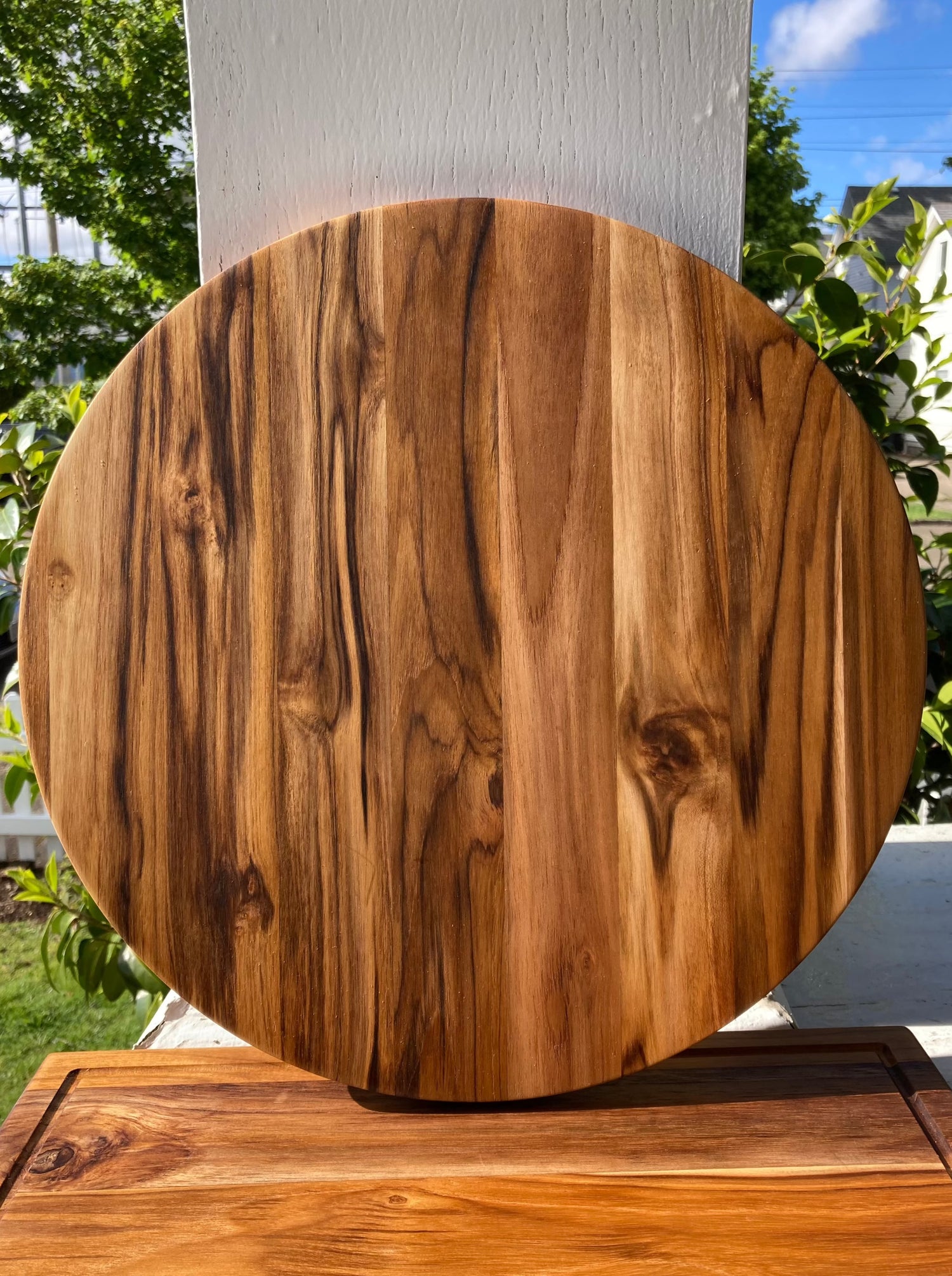Walnut vs Maple vs Teak Cutting Boards: Which One’s Best for Your Kitchen?
Share
If you’re shopping for a premium wood cutting board, three standout options will top the list: walnut, maple, and teak. All are loved by chefs and home cooks alike — but they have important differences you should know before buying.
Here’s your expert guide to walnut vs maple vs teak cutting boards so you can choose the perfect fit for your kitchen.
🌳 Walnut Cutting Boards
Walnut, especially American black walnut, is prized for its rich, dark color and luxurious look. It’s a medium-hard hardwood that balances durability with a slightly softer feel under your knives.
✅ Pros:
- Beautiful deep brown tones with natural variation
- Slightly gentler on knife edges
- Less prone to showing stains from rich-colored foods
- Doubles as an elegant serving or charcuterie board
✅ Cons:
- Slightly more expensive than maple
- Minor surface marks may show over time
🌲 Maple Cutting Boards
Maple (especially hard maple) is a classic cutting board material and a favorite in professional kitchens. It’s pale in color, ultra-durable, and highly resistant to scratches and dents.
✅ Pros:
- Extremely durable and hard-wearing
- More affordable than walnut
- Light color fits modern or rustic kitchens
- Naturally resists bacteria when properly maintained
✅ Cons:
- Slightly harder on knife edges over time
- May show stains from darker foods like beets or wine
🌴 Teak Cutting Boards
Teak is a tropical hardwood known for its natural water resistance and gorgeous golden-brown color. It’s slightly softer than maple but very durable — and thanks to its natural oils, it resists moisture, bacteria, and warping better than most woods.
✅ Pros:
- Naturally water-resistant and antimicrobial
- Self-healing end grain options available
- Warm, beautiful wood grain
- Gentle on knives
✅ Cons:
- Slightly higher price point
- Needs occasional conditioning to maintain luster
- 🍴 Which One Should You Choose?
- Choose walnut for dark, elegant style and a knife-friendly surface
- Choose maple for durability, affordability, and a classic bright look
- Choose teak for water resistance, easy maintenance, and tropical beauty
Pro tip: Many home chefs love having all three — using walnut for presentation, maple for heavy prep, and teak for everyday tasks or display.
📦 Recommended Products
✅ Walnut End Grain Cutting Boards → luxurious, durable, knife-friendly
✅ Maple Cutting Boards → classic, hard-wearing, chef-approved
✅ Teak Cutting Boards → water-resistant, beautiful, versatile
✅ Premium Cutting Board Cream → protects and conditions all three woods
🌿 Final Thoughts
Whether you choose walnut, maple, or teak, you’re investing in craftsmanship that will elevate your kitchen. By knowing the strengths of each wood, you can confidently select the perfect cutting board — or build a well-rounded collection that meets every need.

